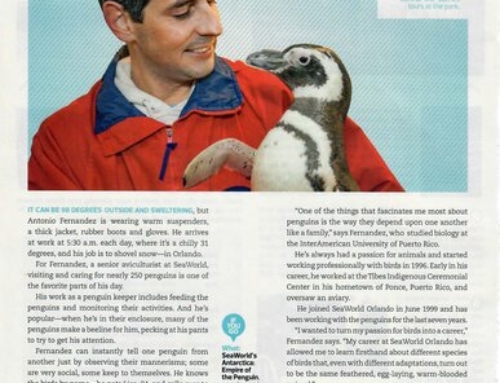Lake City would be very different today if it was still the home of the University of Florida.
The massive institution’s student population of more than 47,000 is almost five times that of Lake City’s population.
With more people, there would undoubtedly be more traffic, more businesses and more money.
The orange and blue saga of the formation of UF is as complex as some of its majors.
According to “A History of Columbia County Florida” by Edward F. Keuchel, Lake City was home to the Florida Agricultural College, a school funded in part by a federal land grant of 90,000 acres.
While the state chartered the school in 1870, it wasn’t built right away.
In 1851, monies were allocated to create seminaries in Florida.
A school opened in East Florida in Ocala in 1853 according the University of Florida Wed site.
It was moved to Gainesville in 1886.
The West Florida school opened in Tallahassee in 1856.
When news about Florida Agricultural College spread, Alachua County presented $50,000 and the Florida Railroad offered 10,000 acres if Gainesville was chosen for the school’s home.
Initially, officials chose to establish the school in Eau Galie in Brevard County.
After some questions arose regarding the Florida State bonds that were purchased with the money from the sale of the federal land grant, construction started in 1876.
When political problems continued to simmer, the school was never opened.
In 1882, it was decided that the school should be relocated.
Joseph Baya and a group of citizens from Columbia County offered 112 acres of land and the county offered $1,000 to start construction if the school was built in Lake City.
The Morill Land Grant College Fund offered a $15,000 subsidy to pay the salaries of five professors and other expenses.
Lake City was selected as the home for the Florida Agriculture College in Feb. 1883 and students started school there in the fall of 1884.
The school was located where the Lake City Veterans Affairs Medical Centers stands today.
At that time, the school was only available for white males.
In addition to agricultural studies, the men were offered classical and military courses.
They were expected to have at least $50 upon starting school and the money was to be given to the school.
A monthly statement was issued to the men.
The students bought dress uniforms for $20 and spent $13.50 for fatigues.
They were asked to bring what textbooks they had to school and purchased other texts from S.B. Thompson of Lake City.
The men lived in dormitories and were required to attend a daily chapel service and Sunday service at a church of their choice.
In 1893, business courses were added.
The three fraternities on campus included Alpha Tau Omega, Kappa Alpha and Pi Kappa Alpha.
In 1901, Florida railroad promoter and Standard Oil millionaire Henry Flagler donated $10,000 to eh college for a gymnasium.
Two years later, the legislature changed the name of the school to the University of Florida.
Life was good in Lake City and the residents were proud of their school.
However, the celebration didn’t last long.
State superintendent of public instruction William M. Holloway, who won his position in 1904, was the most responsible for what served as school superintendent of Alachua County for 12 years and lobbied to move UF to Gainesville.
In May 1905, the Florida Legislature considered a bill to consolidate some of the schools in the state so that the state could maintain the institutions better financially.
The bill was presented by Representative H.H. Buckman of Duval County.
It passed on May 20, 1905, in the House and May 26 in the Senate.
On July 6, 1905, the board of control and the state board of education met to discuss plans for consolidation.
While the colleges for women and blacks were to stay in Tallahassee, there were a hot debate over where the men’s college should be.
The Gainesville group made several offers, while the Lake City proponents stressed the fact that the college was already located there, and highlighted the recent addition of the new gymnasium.
Gainesville made a final offer of 517 acres, $40,000, the use of the Gainesville High School building and free water.
Gainesville was chosen as the new home of UF on July 7, 1905, with the offer of free water cited as the deciding factor.
Dr. Andrew Sledd, the president of the university in Lake City was named president of the school in Gainesville.
UF remained in Lake City until 1906 when construction was complete in Gainesville.
Lake Citians were not pleased to hear their school would be taken and threats of violence occurred against Gainesvillians in the town.
Additionally, teamsters were reported to be reluctant to take the university’s materials south to Gainesville.
In the Lake City Reporter’s centennial tabloid, Nettie Ozaki and Anne Knight write that The Tampa Tribune accused Lake City’s mule team of refusing to take university materials to Gainesville.
The article states that Gainesville had to send mules up to obtain the materials.
In an article called “Keep our school,” by Anne Knight, Dr. Andrew Sledd’s daughter, Frances Blake, described living in Lake City to be difficult after the decision was made to move UF to Gainesville.
On one occasion a few citizens decided, to wait for Sledd to leave the post office.
However, a nearby soldier stopped them and threatened to shoot them if they laid a hand on Sledd.
Although some Lake Citians threatened to shoot at the first buggy taking the university’s materials to Gainesville, not a fire was shot.
Sled led the way to Gainesville with his buggy leading the caravan.
Classes began at the Gainesville campus in 1906 with 102 students enrolled, according to the UF Web site.
The former UF building in Lake City became the home of the Lake City Veterans Affairs Medical Center in 1920.
–Ashley Cisneros
*****************************************************************************
Ashley Cisneros is a co-founder of Chatter Buzz Media, an Orlando Internet marketing firm that helps companies and organizations engage with their target markets through inbound marketing via the Internet. Chatter Buzz Media, which won the Social Madness competition for the Orlando small business market, is a full-service digital marketing firm specializing in website design, search engine optimization (SEO), social media marketing and content creation. Prior to founding Chatter Buzz, Ashley worked as a newspaper reporter, magazine editor, technical writer, marketing manager, public relations practitioner and freelance journalist. To see Ashley’s content writing, visit www.ashleycisneros.com. You can also reach Ashley on her Google profile.




Leave A Comment